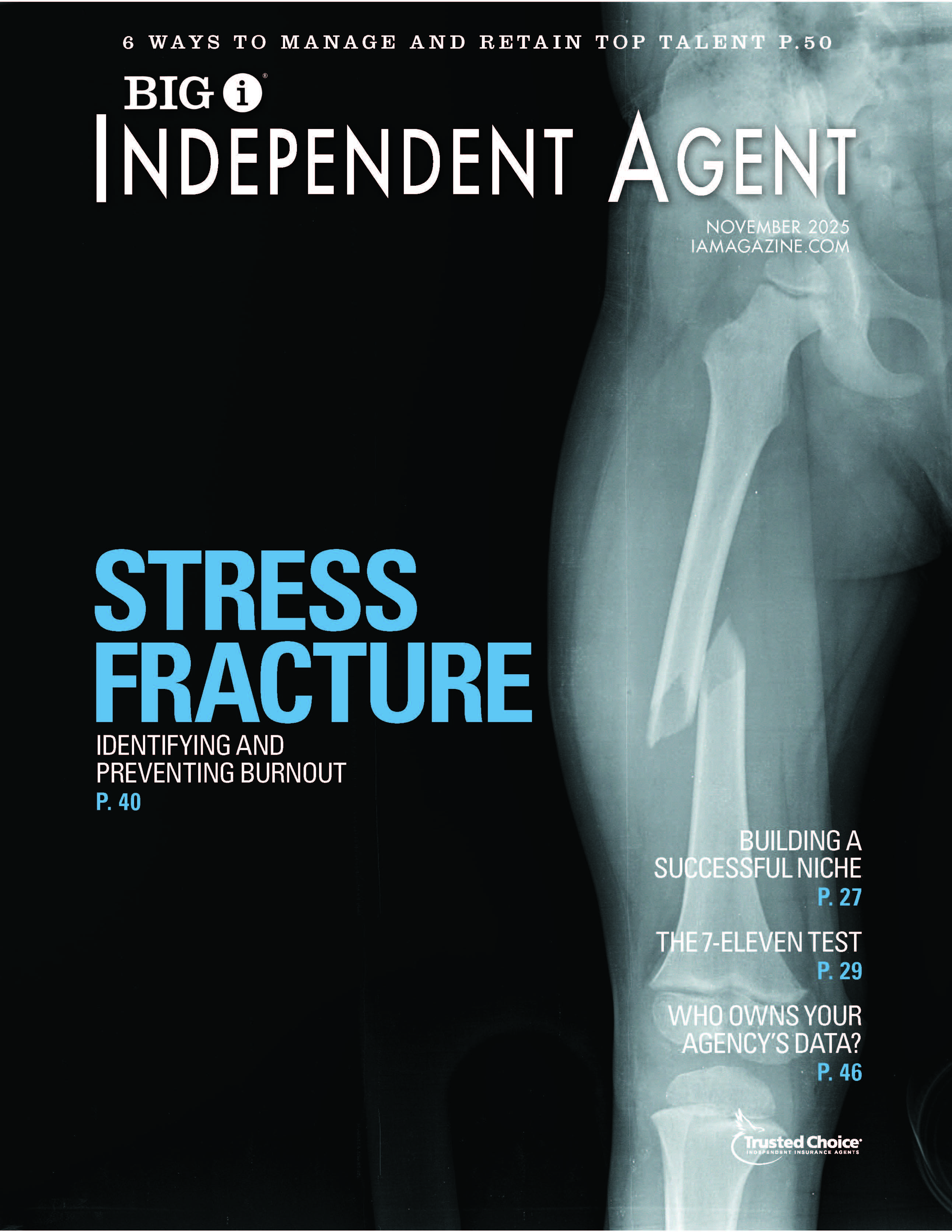3 Workers Comp-Related E&O Exposures to Watch
By: Nicole Yarbrough
Seconds later, you break into a cold sweat and a pit forms in your stomach. You think to yourself, “Did I discuss the three workers comp conundrums?”
Swiss Re Corporate Solutions has found that the following three issues are the most common causes of E&O claims arising from placing workers comp coverage.
1) Location: When an employer has operations in only one state and all its employees live and work in the same state, the rules are easier to navigate. But when a company’s business expands into other states, employs workers that reside in a different state or employs anyone who travels outside the state on business, the coverage picture quickly becomes more complicated.
Did the policy you placed take that other state or states into account? If an employee lives or is injured in a different state than where the business is located, the employee may be able to make a claim in that other state. But in order to qualify for coverage in that state, the workers compensation policy must contemplate it.
Will a basic “home state” workers comp policy suffice for your customer? Probably not, given the mobility and reach of today’s business world. An “other state coverage” endorsement (also known as “all states coverage”) may provide coverage for an employee injured while working in a state with incidental exposure that is not listed on the policy declarations. But this endorsement may not provide coverage for every state that the employee is working in.
Certain states require insureds to obtain coverage from the state workers compensation fund, but they cannot use the “other state coverage” endorsement to obtain it. If the injured employee lives or works in a monopolistic state—currently North Dakota, Ohio, Washington and Wyoming—the insured may need to purchase coverage directly from that state.
State laws also determine the triggers that require a company to purchase workers comp insurance. In some states, one employee is enough to require workers comp coverage; other states have a higher threshold number of non-owner employees, also defined by the state, that triggers mandatory insurance. Some states allow an employer to exempt employees if they are an owner, paid solely on commission or fall within certain categories of worker, but may require specific filings to achieve this exemption.
Some states even have different requirements for the number of employees depending upon the type of industry. For example, a state may require coverage only when a company employs more than three employees in a non-construction industry, but may require coverage when even one employee is employed in construction.
2) Premium: Upon issuing a workers comp policy, an estimated premium is based on the information provided during the application process. But the carrier may conduct premium audits to determine the actual premium for a policy period.
Factors used to determine the premium include employee classification codes and payroll. Carriers may use classification codes to identify different exposures that are priced based upon the risk associated with the kind of work the insured performs. While an employer may indicate a certain code for an employee, the carrier has the final word on the correct classification.
Incorrect classifications can lead to large disparities between the estimated and actual premiums charged to your customer. When determining classifications, more information regarding the duties employees perform increases the likelihood that the estimated premium will not differ dramatically from the actual premium. A company may divide its payroll among different classification codes based on different employee job duties. Making sure you understand the business as well as the status of the employees—for example, whether the business uses subcontractors, independent contractors or more—will help to set a more accurate premium. Carriers will also use payroll computations, including overtime pay and payroll allocation, to determine the premium.
3) Time: A business should obtain workers comp coverage as soon as it has employees as defined by the state. Often, this occurs prior to the business officially opening. If a business does not carry workers comp coverage when required, the employer faces not only exposure to paying benefits if an employee is injured, but also fines and penalties from the state.
Discuss and document each of these factors prior to writing any workers comp policy, whether new business or renewal, if you want to greatly reduce your agency’s risk of an E&O claim.
Nicole Yarbrough is vice president and claims manager at Swiss Re Corporate Solutions and works out of the office in Overland Park, Kansas.










